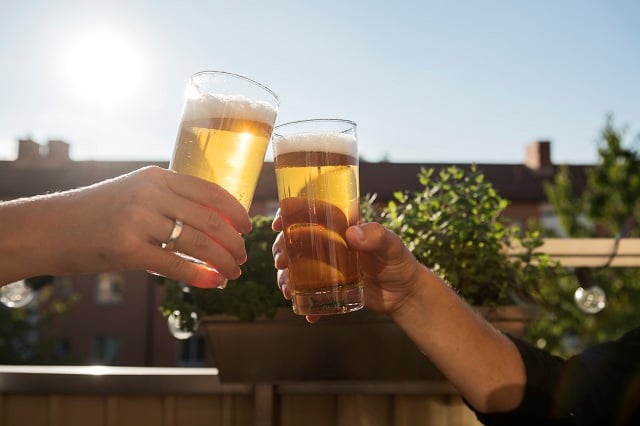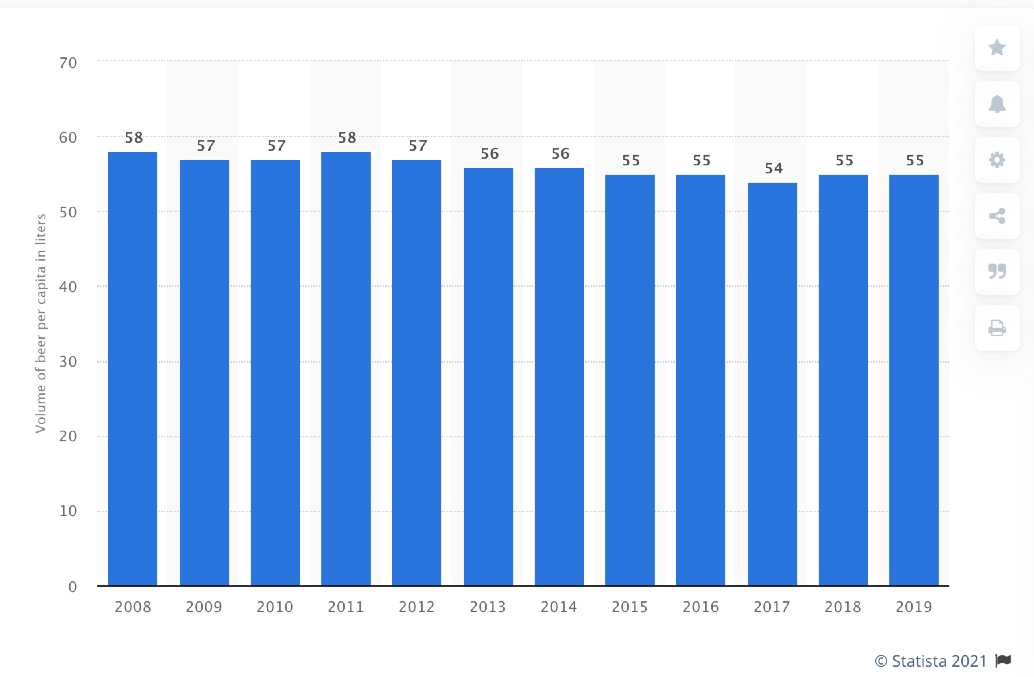The popularity of alcohol-free beer is growing fast in Sweden, thanks to technical progress which has improved both the quality and variety of the beverage. It was the drink category that saw the biggest rise in sales in Sweden during 2018, with a 41 percent growth, according to figures from the Swedish Brewers Association.
“We see an increase in all areas; [state-run alcohol monopoly] Systembolaget has increased its sales, restaurants now have more than one variety and the beer selection in supermarkets [where only drinks with an alcohol content below 3.5 percent may be sold] has become noticeably more interesting to consumers,” the association's CEO Anna-Karin Fondberg said.
Swedish brewery Spendrups, one of the major players in the market, has seen a 30 percent increase in sales of alcohol-free beer since 2018, and last year was a record year.
“It's a trend in society that we're turning to alcohol-free products more and more, but I think that more than anything it's about the taste,” commented Spendrups head of press Rose-Marie Hertzman.
“There is now a really good alternative for those who for some reason want to abstain from alcohol, and that has not always been the case. When we manufacture alcohol-free beer, we first make a strong beer [with high alcohol content] and then take away the alcohol, so you keep all the flavours,” said Hertzman.
Making beer free from alcohol is a complicated and expensive process, requiring manufacturers either to cut off the fermentation process or remove the alcohol afterwards. Alcohol is a flavour carrier, but modern techniques mean that it's no longer the case that alcohol-free beer means a flavourless drink.
Anna-Karin Fondberg of the Swedish Brewers Association agrees that product development has been important for the increased interest in alcohol-free beers.
“Swedish breweries got in there early and put a lot of resources into development, and it's paying off now. Consumers are choosy and alcohol-free beer today is a high quality product,” she said.
While the major breweries have played a part, a large number of microbreweries have started up over recent years, and helped draw attention to the wide variety when it comes to beer. This has meant that there are no longer only alcohol-free lagers, but also IPAs, ales, and porters.
The biggest market for alcohol-free beer is young people living in Sweden's major cities, and as alcohol-free beer has risen in popularity, sales of low-alcohol beer or lättöl have fallen. Since 2018, more alcohol-free beers have been sold than lättöl, which has long been a popular choice for lunch and the only alternative outside Systembolaget's opening hours, and is most popular with middle-aged men.
Another of the reasons for booming sales of alcohol-free beer could well be an increased interest in healthy eating and drinking habits. While healthy food and exercise have long been important to Swedish consumers, and this has been reflected in sales figures within those sectors, there appears to be increasing attention paid to drinks and particularly alcohol.
“I think people want to drink different things at different occasions. We see in our surveys that many people don't only drink alcohol-free beverages, but earlier when someone for some reason didn't want a beer with alcohol, they would turn to water or soda,” said Fondberg.




 Please whitelist us to continue reading.
Please whitelist us to continue reading.
Member comments